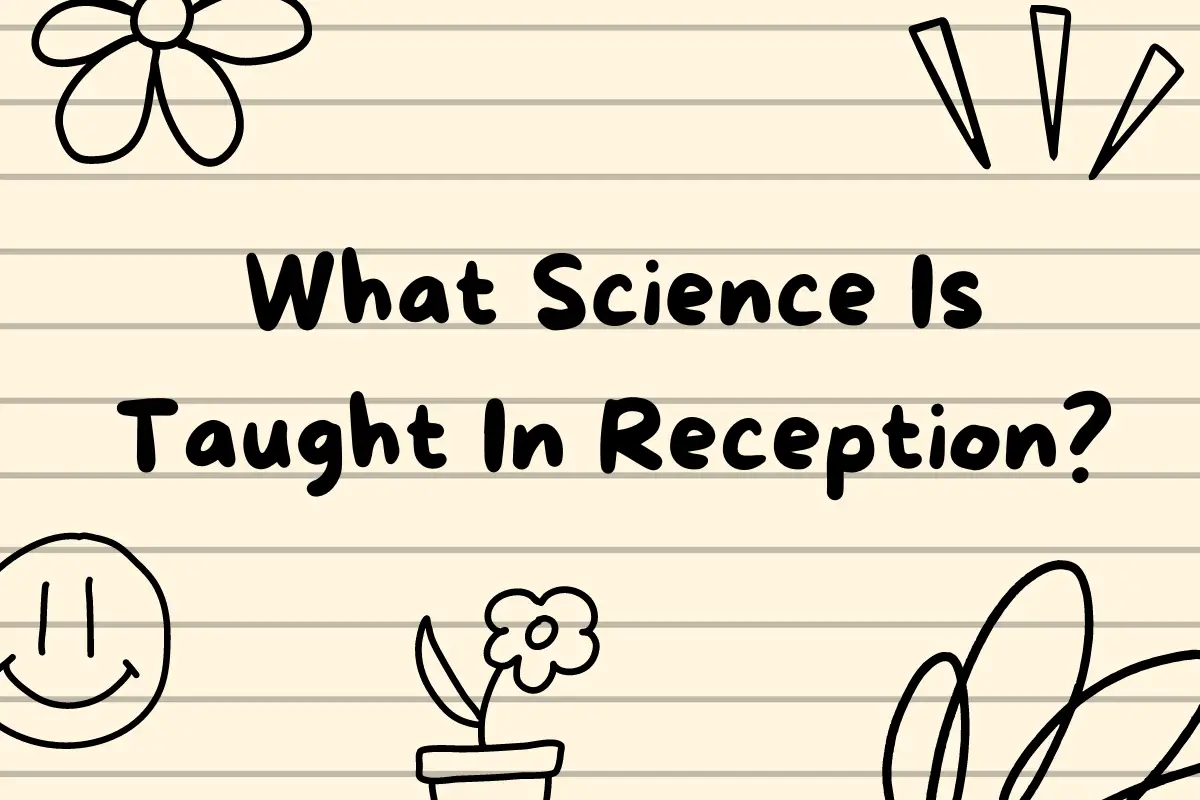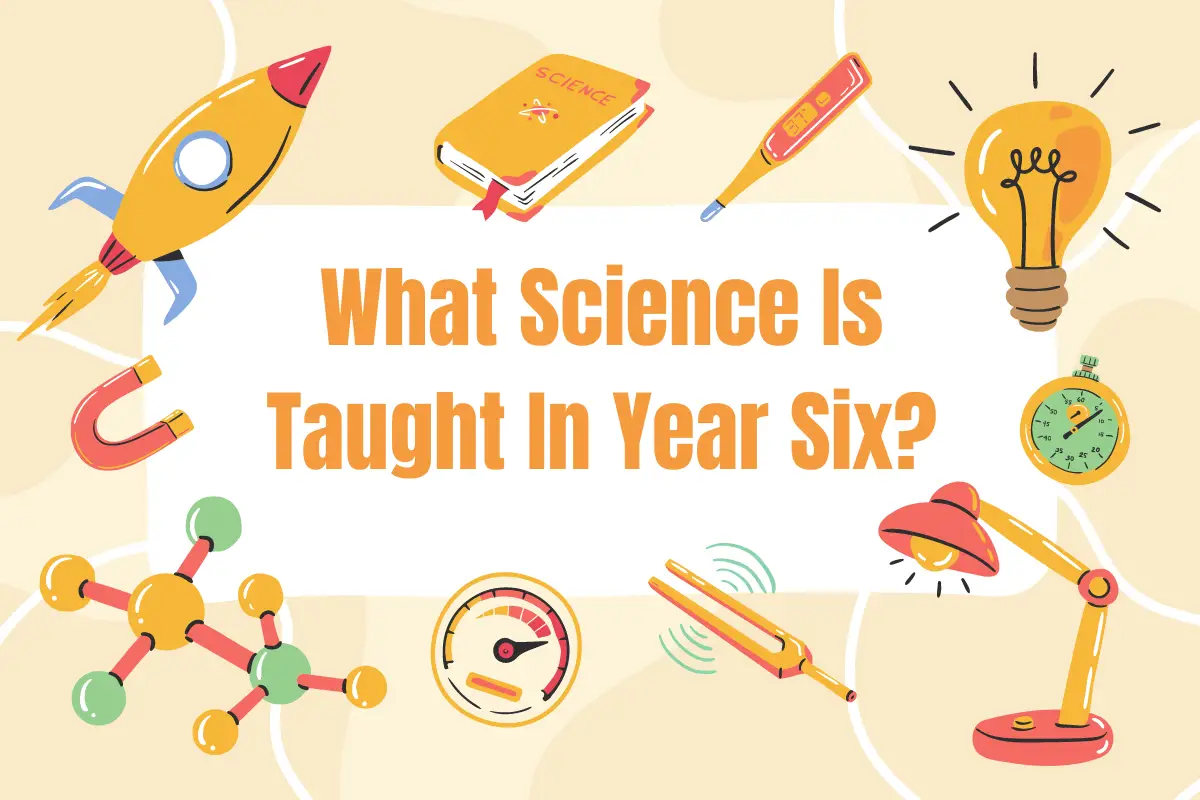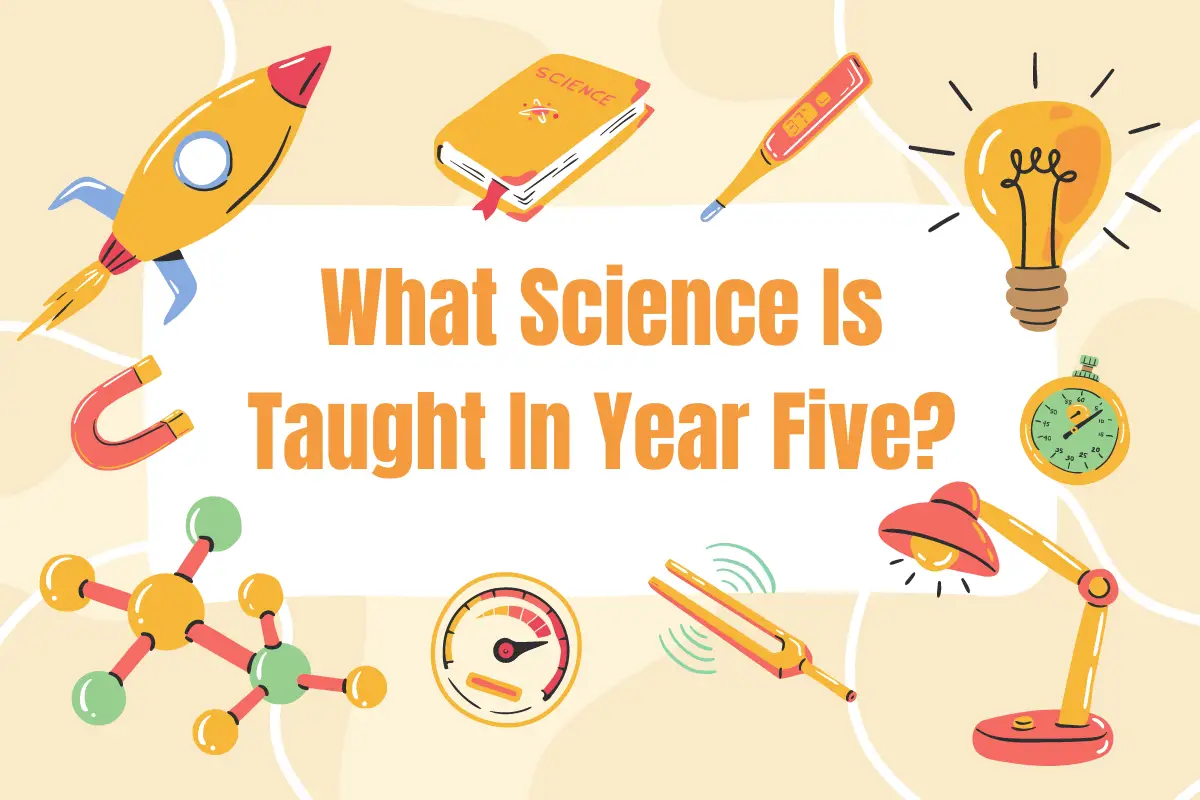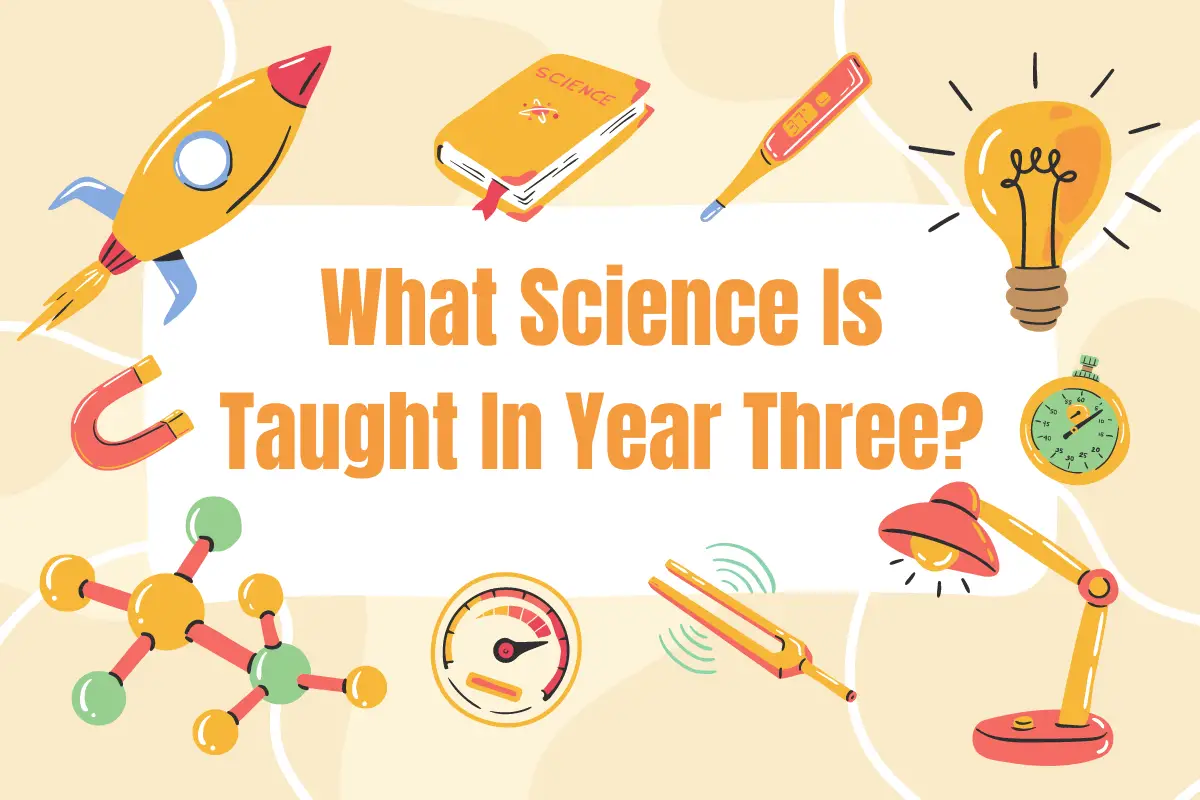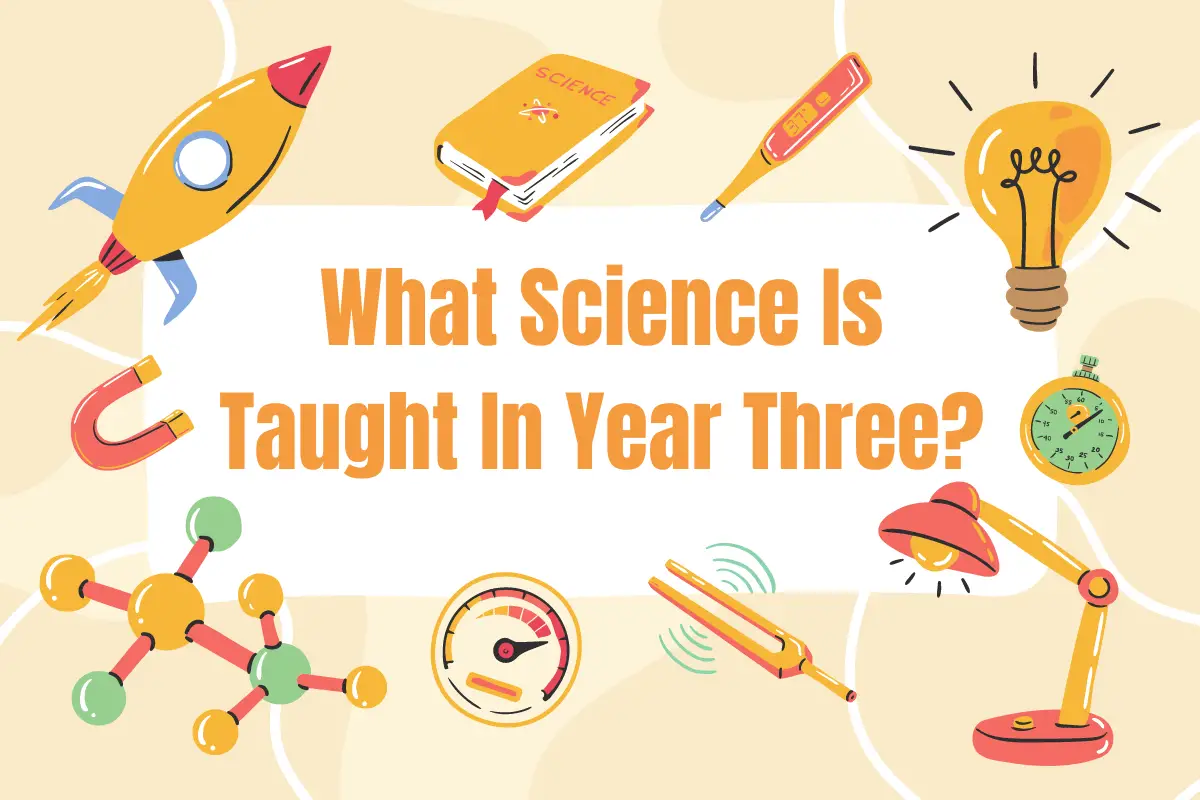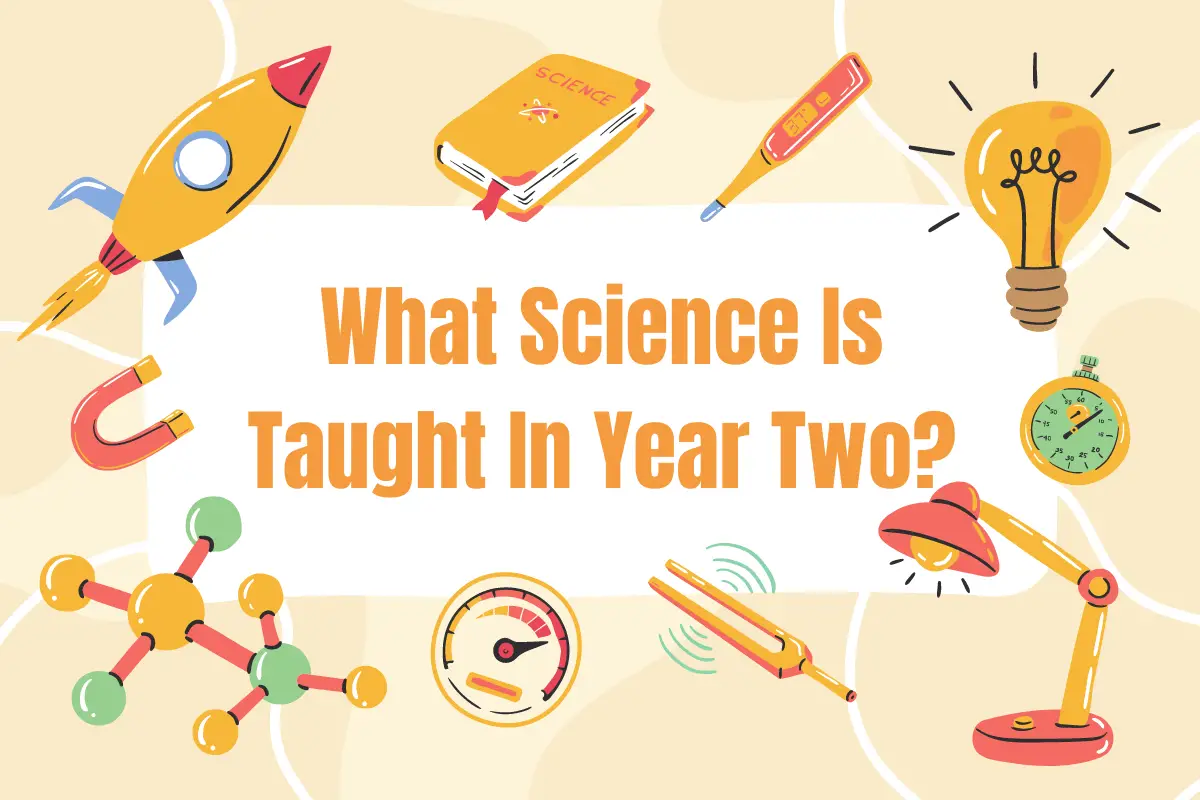Are you the parent of a seventh grader and curious to know what science is taught in seventh grade? Well, you’re certainly not alone!
As our children progress through their education, we all want to ensure they receive the best foundation possible.
To help answer this question for parents like us, let’s look at an overview of topics typically covered in seventh-grade science classrooms across the country.
We’ll explore everything from basic biology principles to advancements and applications in environmental sciences.
With these insights into what your child is learning at school, you can feel more confident that they have exposure to creative problem-solving techniques and modern lab safety practices.
Let’s jump right in and explore what science is taught in seventh grade classrooms today!
Related: For more, check out our article on How To Improve Writing In Seventh Grade here.
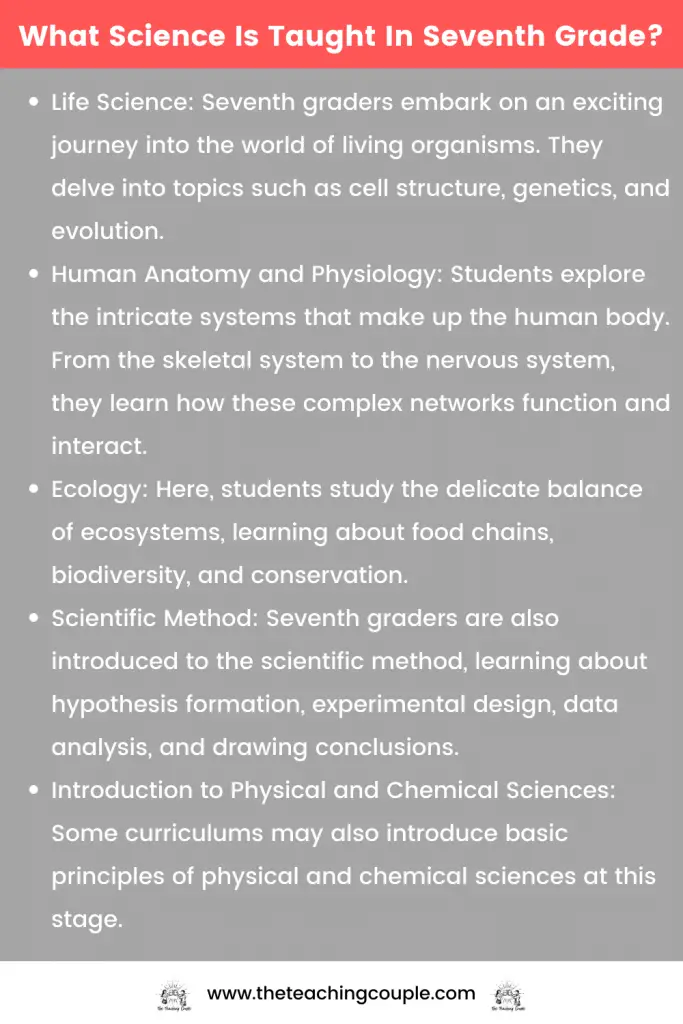
Biology – Exploring the Building Blocks of Life
Biology is the study of living organisms and their interactions with each other and their environments.
For seventh graders, it’s a fascinating opportunity to explore the building blocks of life and begin understanding the complex processes that govern the natural world.
In this crucial stage of education, students delve into essential topics such as cells, genetics, and ecosystems, which lay the foundation for more advanced studies in high school and beyond.
Cells: The Basic Units of Life
One of the first topics that seventh-grade students encounter in biology is the cell.
As the smallest living units, cells form the basis of all living organisms, from single-celled bacteria to multicellular creatures like humans. Students learn about the two main types of cells – prokaryotic and eukaryotic – and their distinguishing features.
They also explore the various organelles within cells, such as the nucleus, mitochondria, and endoplasmic reticulum, which help perform vital functions for the cell’s survival.
Genetics: The Blueprint of Life
Genetics is another integral part of biology that seventh graders begin to explore. They learn about DNA (deoxyribonucleic acid), the genetic material that carries the instructions for an organism’s traits and characteristics.
Students are introduced to the concept of genes and how they determine specific traits, such as eye color or blood type.
They also study the process of inheritance and how traits are passed down from one generation to the next through sexual reproduction.
This includes learning about dominant and recessive genes, as well as understanding the basics of Mendelian genetics, named after Gregor Mendel, the father of modern genetics.
Evolution and Natural Selection
Seventh-grade biology students often learn about the theory of evolution, which helps explain the diversity of life on Earth.
They study Charles Darwin’s groundbreaking work on natural selection, the process by which organisms with traits that are advantageous for their environment are more likely to survive and reproduce.
Students learn about the evidence supporting the theory of evolution, such as fossils and comparative anatomy, and how this evidence has been used to develop the concept of common descent – the idea that all living organisms share a common ancestor.
Ecosystems: The Interconnectedness of Life
In seventh-grade biology, students also delve into the study of ecosystems, which are communities of living organisms interacting with each other and their physical environment.
They learn about the different types of ecosystems, such as forests, grasslands, and aquatic systems, and the unique characteristics of each.
Students explore the roles of producers, consumers, and decomposers in an ecosystem and how energy flows through these trophic levels.
They also study the concept of food chains and food webs, which help illustrate the complex relationships between organisms within an ecosystem.
The Importance of Seventh-Grade Biology
Seventh-grade biology is a crucial stepping stone in a student’s understanding of the natural world.
By exploring the building blocks of life – cells, genetics, evolution, and ecosystems – students develop a strong foundation that will serve them well in their future scientific endeavors.
This knowledge not only helps them appreciate the complexity and beauty of life but also fosters critical thinking and problem-solving skills that are essential for success in any field.
Chemistry – The Elements and Compounds Around Us
Chemistry is a fascinating branch of science that studies the composition, properties, and changes of matter. It helps us understand the world around us by exploring the interactions between various elements and compounds.
In seventh grade, we begin to dive into the exciting world of chemistry, starting with the basic building blocks of matter: elements and compounds.
Elements: The Building Blocks of Matter
An element is a pure substance made up of only one type of atom. Atoms are the smallest units of an element that still retain the properties of that element.
There are currently 118 known elements, and each one is unique in its atomic structure.
Elements are organized in the periodic table, which groups them based on their similar properties. Some common elements you might be familiar with include:
- Hydrogen (H)
- Oxygen (O)
- Carbon (C)
- Nitrogen (N)
- Iron (Fe)
- Gold (Au)
These elements can be found in various forms in nature, and they make up everything around us, including the air we breathe, the water we drink, and the food we eat.
Compounds: Combinations of Elements
When two or more elements chemically combine, they form a compound. A compound is a pure substance composed of two or more different elements in a fixed proportion.
The properties of a compound are usually different from those of the elements that form it.
Compounds are formed through chemical reactions, where atoms from different elements bond together to create new substances. These bonds can be either ionic or covalent:
- Ionic Bonds: Formed when one atom gains electrons while another atom loses electrons. This transfer of electrons creates charged particles called ions, which are then attracted to each other.
- Covalent Bonds: Formed when two atoms share electrons, creating a strong bond between them.
Some common compounds you might be familiar with include:
- Water (H2O): Made up of two hydrogen atoms and one oxygen atom.
- Carbon dioxide (CO2): Made up of one carbon atom and two oxygen atoms.
- Salt (NaCl): Made up of one sodium atom and one chlorine atom.
Elements and Compounds in Our Everyday Lives
We interact with elements and compounds every day, often without even realizing it. Here are some examples:
- Breathing: When we breathe, our body takes in oxygen (O2) from the air and releases carbon dioxide (CO2) as a waste product.
- Drinking water: Water (H2O) is essential for life and is made up of hydrogen and oxygen atoms.
- Eating: The food we eat contains various elements and compounds that provide our bodies with energy and nutrients.
Understanding the elements and compounds around us is an essential part of understanding the world we live in. As you continue to learn about chemistry, you’ll discover even more fascinating connections between the substances that make up our universe.
Earth Science – Analyzing Our Planet
Seventh grade is an exciting time for students to dive deeper into the world of Earth Science. As young scientists, seventh graders are allowed to explore and analyze our planet more comprehensively.
This includes studying the Earth’s structure, processes, history, and its relationship with other celestial bodies. Let’s take a closer look at some key topics covered in seventh-grade Earth Science.
The Earth’s Structure
One of the fundamental aspects of Earth Science is understanding the Earth’s structure, which is composed of different layers. Students learn about the Earth’s three main layers: the crust, the mantle, and the core.
They delve into the properties and composition of each layer, as well as their significance in shaping our planet.
1. The Crust
The Earth’s crust is the thin outermost layer that forms the surface of the Earth.
It consists of two types: continental crust and oceanic crust. Students learn about the various rock types found in the Earth’s crust, such as igneous, sedimentary, and metamorphic rocks.
They also study the role of plate tectonics in shaping the Earth’s surface, including the formation of mountains, earthquakes, and volcanoes.
2. The Mantle
Beneath the crust lies the mantle, a thick layer of solid rock that makes up the majority of the Earth’s volume.
In seventh grade, students explore the concept of convection currents within the mantle, which drive the movement of tectonic plates on the Earth’s surface.
3. The Core
The Earth’s core is divided into two parts: the inner core and the outer core. Seventh graders learn about the composition of the core, which is primarily made up of iron and nickel.
They also discuss the role of the Earth’s magnetic field, which is generated by the movement of molten iron in the outer core.
Earth’s Processes
Seventh-grade Earth Science introduces students to various processes that shape our planet, such as the rock, water, and carbon cycles. Students learn how these cycles work and their importance in maintaining the Earth’s systems.
Earth’s History
Understanding the Earth’s history is crucial for seventh graders studying Earth Science. They explore the concept of geologic time, which is divided into eons, eras, periods, and epochs.
Students learn about the techniques used by scientists to determine the age of rocks and fossils, such as relative dating and radiometric dating.
Earth’s Place in the Universe
In seventh-grade Earth Science, students also study the Earth’s relationship with other celestial bodies. They learn about the solar system, the Milky Way galaxy, and the universe beyond.
Additionally, they discuss the role of gravity in shaping planetary systems and the effects of the Earth’s rotation and revolution on its climate and seasons.
By the end of seventh grade, students will have developed a strong foundation in Earth Science, allowing them to appreciate the complexities of our planet and its place in the universe.
This knowledge will help them become informed global citizens and inspire them to pursue further studies in Earth Science or related fields.
Physics – Dissecting Motion and Energy
Motion: Speed, Velocity, and Acceleration
Motion is the change in an object’s position over time. To fully comprehend motion, students must become familiar with three essential concepts: speed, velocity, and acceleration.
- Speed is the measure of how fast something moves. It is calculated by dividing the distance traveled by the time it takes to travel that distance. The unit for speed is typically meters per second (m/s).
- Velocity also measures how fast something moves, but it also includes the motion’s direction. Velocity is a vector quantity with both magnitude (speed) and direction. Like speed, the unit for velocity is meters per second (m/s).
- Acceleration is the rate at which an object’s velocity changes over time. It is a measure of how quickly an object speeds up, slows down, or changes direction. The unit for acceleration is meters per second squared (m/s²).
By understanding these concepts, students can analyze and predict the motion of objects in various scenarios.
Energy: Potential and Kinetic
Energy is the ability to do work or cause change. Two main types of energy are often discussed in seventh-grade physics: potential energy and kinetic energy.
- Potential Energy is stored energy that an object possesses due to its position, shape, or condition. One common form of potential energy is gravitational potential energy, which depends on an object’s height above the ground and its mass. The greater the height and mass, the more gravitational potential energy an object has.
- Kinetic Energy is the energy of motion. Moving objects have kinetic energy, which depends on its mass and speed. The greater the mass and speed, the more kinetic energy an object has.
A vital principle in physics is energy conservation, which states that energy cannot be created or destroyed, only converted from one form to another. For example, when an object falls from a height, its potential energy is transformed into kinetic energy.
Investigating Motion and Energy Through Experiments
Seventh-grade students can explore motion and energy through various hands-on experiments and activities. These experiments allow students to see physics principles in action and reinforce their understanding of these concepts.
Some popular experiments include:
- Ramp Races: Students can investigate the relationship between height, speed, and acceleration by racing objects down ramps with different inclines.
- Pendulum Swings: By constructing simple pendulums, students can examine the transfer of potential energy to kinetic energy and back again as the pendulum swings.
- Elastic Launchers: Using rubber bands or other elastic materials, students can explore the concepts of potential and kinetic energy by launching small objects and measuring their distances.
Students can develop a solid foundation for understanding more advanced topics in future science classes by dissecting motion and energy concepts in seventh-grade physics.
This knowledge will also help them appreciate the importance of physics in our everyday lives and the natural world around us.
Lab Experiences to Put Theory Into Practice
In seventh grade, students are often introduced to more complex concepts in science and other subjects. To help them understand and apply these concepts, lab experiences can be crucial in bridging the gap between theory and practice.
Engaging hands-on activities not only make learning more enjoyable but also enable students to grasp abstract ideas more tangibly. Here are some lab experiences that can be incorporated into the seventh-grade curriculum to put theory into practice.
1. Microscope Exploration
One of the most exciting lab experiences for seventh-graders is using a microscope to examine various specimens. Students can explore the world of microorganisms, plant cells, and animal cells by observing slides under different magnifications.
This hands-on activity allows them to see the intricate structures and processes they have learned in their textbooks, thus reinforcing their understanding of cell biology.
2. Chemical Reactions
Seventh-grade chemistry often introduces students to different types of chemical reactions, such as synthesis, decomposition, and displacement reactions.
Students can observe these reactions firsthand by conducting simple experiments with safe household chemicals.
For instance, baking soda and vinegar demonstrate an acid-base reaction, while iron nails in copper sulfate solution can show a displacement reaction.
These experiments help students visualize the changes occurring during chemical reactions and connect to real-life applications.
3. Density and Buoyancy
To explore the concepts of density and buoyancy, students can perform a series of experiments using various liquids and objects.
They can investigate the relationships between mass, volume, and density by measuring and calculating these properties for different materials.
Additionally, students can test the buoyancy of objects in different liquids and use their observations to understand how density affects whether an object will float or sink.
These hands-on activities allow students to experience the principles of density and buoyancy in action.
4. Simple Machines
Seventh-grade physics often includes the study of simple machines, such as levers, pulleys, and inclined planes. Students can better understand how they work and their real-life applications by constructing and experimenting with these machines.
For example, students can build a small catapult to explore the principles of levers or create a pulley system to lift weights.
These experiments help students appreciate the power of simple machines and their role in making our lives easier.
5. Ecosystems and Food Webs
Seventh-graders learn about ecosystems, food chains, and food webs in life science. To bring these concepts to life, students can create models of ecosystems using living organisms, such as plants, insects, and small animals.
They can observe how these organisms interact with each other and their environment and use their observations to construct food chains and food webs.
This hands-on activity allows students to see the interconnectedness of living things and the importance of maintaining balanced ecosystems.
Seventh-grade science classes involve various topics, including natural resources and human nutrition. With this knowledge, students gain valuable insight into the fundamentals of STEM subjects and better understand how the work being done in class impacts their everyday lives.
Plus with so many exciting topics to cover, seventh-grade science class can be a great time to explore and discover the world around them.
Although there is much to learn in seventh-grade science classes, it also offers a great source of entertainment and helps develop critical analytical skills.
Conclusion
With modern technology and resources, seventh graders have many options for advancing their knowledge in this subject area.
So, even if you’ve missed an actual class, you can still explore the scientific disciplines with self-study or online courses.
As such, don’t let anything hinder your scientific pursuits – keep learning and use our blog posts as a starting point for greater understanding! Please read our other articles for more information on education topics.
FAQ
What are the main science topics taught in seventh grade?
In seventh grade, the main science topics typically include life science (biology), earth and space science, and physical science. These subjects often involve studying cells, genetics, human body systems, weather and climate, chemical reactions, and physics principles.
What concepts in biology are taught in seventh grade?
Seventh graders generally learn the basics of life science or biology. This includes understanding cells, their structure, and function, genetics, heredity, evolution, ecosystems, and the structure and function of the human body systems.
What is covered under earth and space science in seventh grade?
Under earth and space science, students learn about earth’s place in the universe, earth’s systems like weather and climate, and the history of planet Earth. They may also cover topics like geology, meteorology, and astronomy.
What aspects of physical science are taught in seventh grade?
Physical science in seventh grade usually covers matter and its interactions, motion and stability, and energy. Students might learn about chemical reactions, forces and interactions, types of energy, and how they are transferred or conserved.
Are laboratory experiments part of the seventh-grade science curriculum?
Yes, lab experiments are a crucial part of the seventh-grade science curriculum. They provide hands-on experience with scientific concepts and teach students about lab safety and scientific investigation methods.
How does seventh grade science prepare students for future studies?
Seventh grade science lays a strong foundation for high school science by introducing key concepts in biology, earth and space science, and physical science. It also fosters critical thinking, problem-solving skills, and a scientific mindset.
What resources can I use to support my child’s seventh-grade science learning at home?
Supporting materials can include textbooks used in school, online resources like educational websites and videos, science kits for hands-on learning, and local science museums or centers. Regular discussions about what they’re learning can also be beneficial.
Are environmental sciences included in the seventh-grade curriculum?
This might vary from school to school, but many seventh-grade curriculums include aspects of environmental science. This could involve studying ecosystems, climate change, and human environmental impact.

